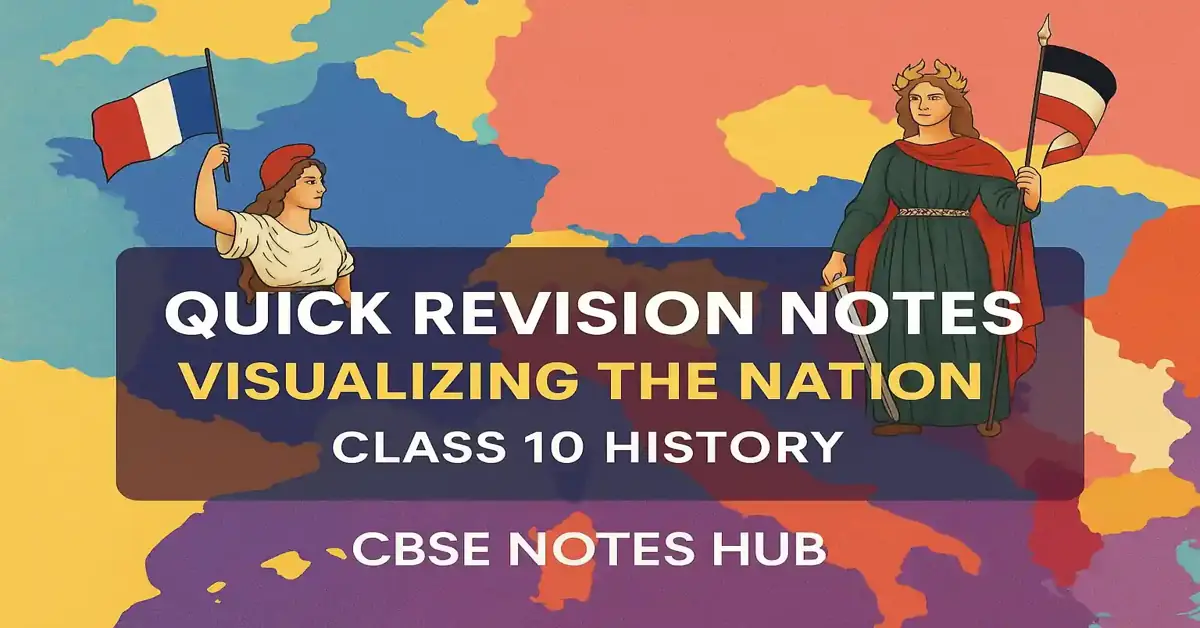This post explains how the abstract idea of nationalism and nation-state is represented through Germania in Germany and Marianne in France, and how nationalism aligned with imperialism became the reason for the First World War.
Rise of Nationalism in Europe – Class 10 History Notes (Part 6)
Visualising the Nation
- Artists in the 18th and 19th centuries portrayed nations as female figures.
- Allegory — an abstract idea shown through a person or thing.
- Germania represented Germany.
- Marianne represented the Republic of France.
Meanings of the Symbols
- Broken Chains — Freedom
- Breastplate with Eagle — Strength of the German Empire
- Crown of Oak Leaves — Heroism
- Sword — Preparedness to fight
- Olive Branch around Sword — Desire for peace
- Black, Red & Gold Tricolour — Flag of 1848 liberals (banned by dukes)
- Rays of Rising Sun — Start of a new era
📘 Must Read: Unification of Germany, Italy and Britain – Class 10
Nationalism and Imperialism – The Balkan Issue
- By the late nineteenth century, nationalism lost its idealistic, liberal, democratic spirit.
- Nationalist groups grew intolerant of each other and sought territorial expansion.
- After 1871, the Balkans became the most serious source of nationalist tension.
- The Balkans was ethnically diverse, largely Slavic, and under Ottoman control.
- Ideas of nationalism swept the region with the decline of the Ottoman Empire.
- Each Balkan state competed for more territory, creating mutual jealousy and conflict.
- Great Powers—Russia, Germany, Britain, Austria-Hungary—intervened to expand influence.
- Nationalism aligned with imperialism led to repeated conflicts and ultimately drew Europe into the First World War in 1914.
Source: NCERT
📌 Also Read:
Rise of Nationalism in Europe – Part 3

